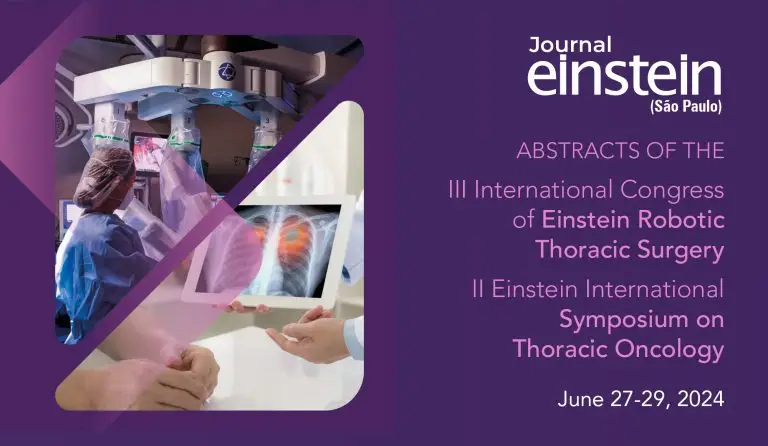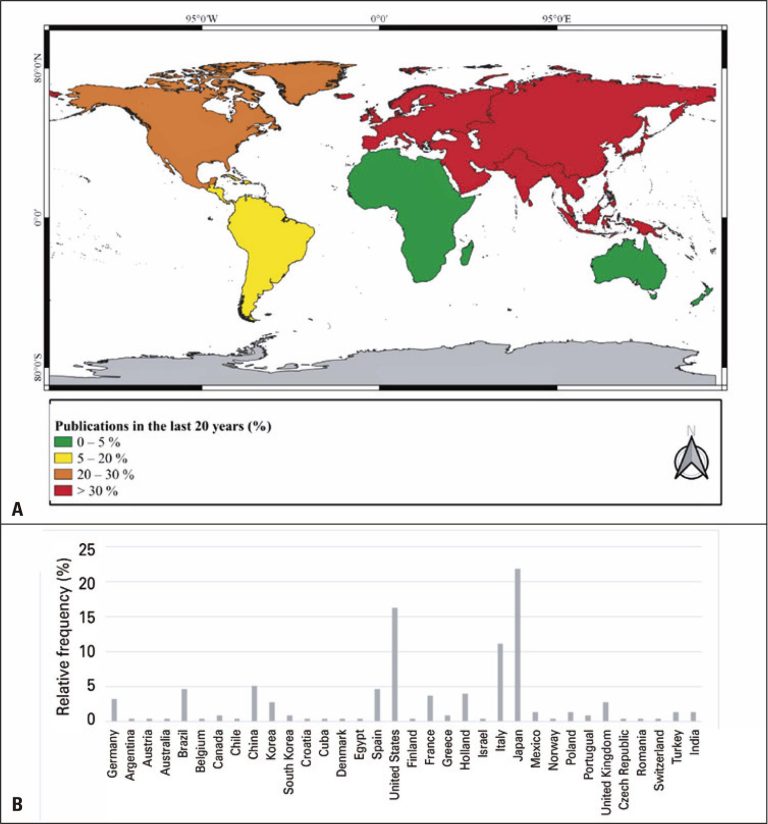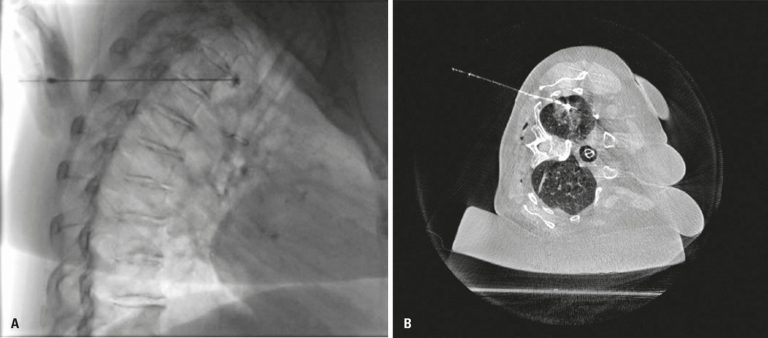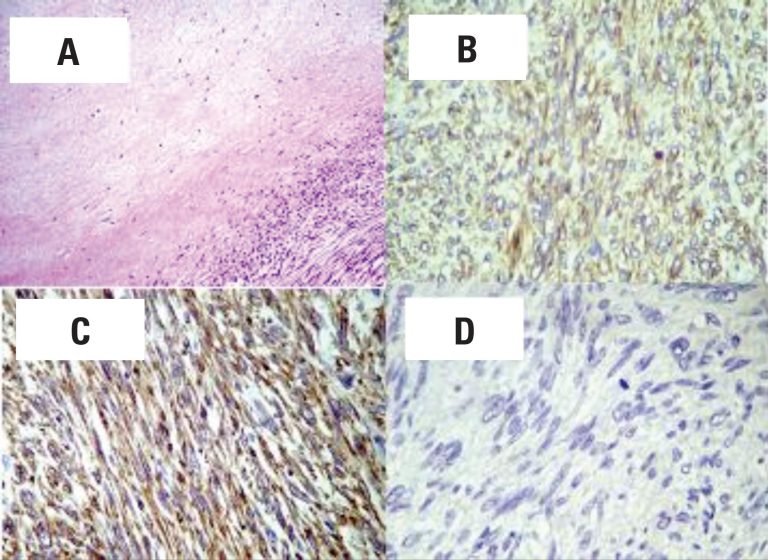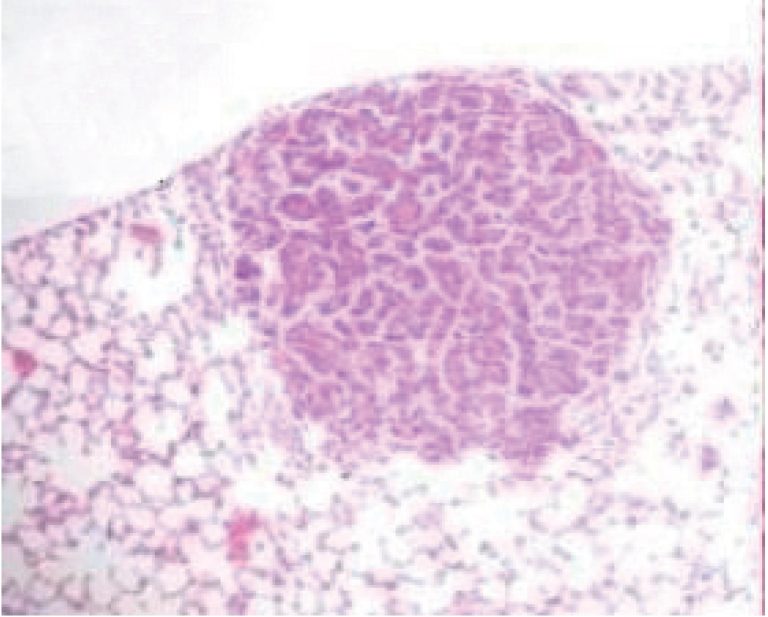10/Nov/2025
Artificial intelligence in a Brazilian lung cancer screening program: accuracy and predictive values
DOI: 10.31744/einstein_journal/2025AO1283
Highlights ■ The artificial intelligence tool demonstrated high sensitivity (92.5%) and a negative predictive value of 97.8%. This effectively excluded examinations that were not clinically significant. ■ However, its low specificity (78.5%) and positive predictive value (50%) emphasize the importance of radiologist’s supervision. ■ – artificial intelligence missed 4.7% of nodules measuring >6mm, most of which were subsolid (62%). ■ The tool has the potential to improve workflows in lung cancer screening programs. ABSTRACT Objective: We aimed to investigate the […]
Keywords: Artificial intelligence; Lung neoplasms; Mass screening; Radiation dosage; Tomography, x-ray computed
25/Jun/2024
Comprehensive analysis: efficacy of pembrolizumab as an initial therapy for PD-L1 negative NSCLC
DOI: 10.31744/einstein_journal/2024ABS_BTS_STO010
Category: Thoracic Oncology Introduction: Bronchogenic tumors, predominantly non-small cell type (NSCLC), are a global health concern, with adenocarcinomas, their most common subtype, being most often diagnosed at advanced stages, making it essential to develop effective therapeutic strategies, especially for patients with NSCLC who do not express the PD-L1 (Programmed Death-Ligand 1) protein. Two pivotal studies, Keynote-189() and Keynote-407,() presented their combined results in 2023, after a 5-year follow-up,() concluding that the combination of Pembrolizumab and chemotherapy demonstrated substantial improvements in […]
Keywords: Drug therapy; Immunotherapy; Lung neoplasms; Non-small-cell-lung; PD-L1 protein
25/Jun/2024
Validation of thoracic surgery mortality prediction models in a contemporary database
DOI: 10.31744/einstein_journal/2024ABS_BTS_STO016
Category: Thoracic Surgery Introduction: Currently, surgical resection is considered the best treatment available for early-stage lung cancer. In recent decades, minimally invasive procedures have revolutionized thoracic surgery, expanding the benefited patient population by reducing morbidity and mortality rates, incidence of complications, length of hospital stay and postoperative pain.() However, lung resections remain associated with significant morbidity and mortality, with national studies indicating a complication rate of 21.8% and an in-hospital mortality rate of 1.8% for video- assisted surgeries.() Concomitantly, various […]
Keywords: Lung neoplasms; Postoperative mortality; Risk prediction; Thoracic surgery
06/Jun/2024
Prognostic value of programmed cell death ligand 1 (PD-L1) expression in patients with stage III non-small cell lung cancer under different treatment types: a retrospective study
einstein (São Paulo). 06/Jun/2024;22:eAO0575.
View Article06/Jun/2024
Prognostic value of programmed cell death ligand 1 (PD-L1) expression in patients with stage III non-small cell lung cancer under different treatment types: a retrospective study
DOI: 10.31744/einstein_journal/2024AO0575
Highlights PD-L1 expression by immunohistochemistry is positive in more than half on stage III non-small lung cancer. PD-L1 expression by immunohistochemistry had no relationship with clinical characteristics. PD-L1 expression by immunohistochemistry is not related to progression-free or overall survival in patients treated with chemoradiotherapy with or without surgery. ABSTRACT Objective: Currently programmed cell death protein 1 (PD-1) inhibitors in combination with other therapies are being evaluated to determine their efficacy in cancer treatment. However, the effect of PD-ligand (L) 1 […]
Keywords: Adenocarcinoma; Carcinoma, non-small-cell lung cancer; Lung neoplasms; Programmed cell death 1 receptor
13/Oct/2022
International trends in pulmonary neuroendocrine cancer studies:a scientometric study
DOI: 10.31744/einstein_journal/2022RW0113
ABSTRACT Introduction Pulmonary neuroendocrine tumors account for approximately 20% of all primary lung tumors. Few studies summarize the current body of pulmonary neuroendocrine tumors studies worldwide. Objective A quantitative scientometric analysis was conducted to evaluate the development of applications and innovations and to analyze their contribution to various areas of improvement in treatment and diagnosis of pulmonary neuroendocrine tumors. Methods We searched for studies published in the last 20 years in the databases United States National Library of Medicine (PubMed), […]
Keywords: Lung neoplasms; Neuroendocrine tumors; Scienciometry; Scientometric analysis
07/Apr/2022
Lung nodule localization in hybrid room before minimally invasive thoracic surgery: series of 20 cases and literature review
einstein (São Paulo). 07/Apr/2022;20:eAO6665.
View Article07/Apr/2022
Lung nodule localization in hybrid room before minimally invasive thoracic surgery: series of 20 cases and literature review
DOI: 10.31744/einstein_journal/2022AO6665
ABSTRACT Objective To describe an experience in the preoperative localization of small pulmonary nodules and ground-glass lesions to guide minimally invasive thoracic surgery; in addition, a literature review was conducted, including the main advantages and disadvantages of the different agents used, and site marking in a hybrid operating room. Methods A retrospective search was conducted in a Interventional Radiology Department database, between March 2015 and May 2019, to identify patients undergoing preoperative percutaneous marking of lung injuries measuring up to […]
Keywords: Lung neoplasms; Preoperative period; Radiology, Interventional; Solitary pulmonary nodule; Thoracic surgery, video-assisted
18/Nov/2014
Genetic polymorphisms and non-small-cell lung cancer: future paradigms
DOI: 10.1590/S1679-45082014RB2906
This article addresses some current issues about genetic polymorphisms studied in the non-small-cell lung cancer translational field. Furthermore, it discusses about new potential biomarkers regarding lung cancer risk and prognosis.
Keywords: biological; genetic; Lung neoplasms; Polymorphism; Prognosis; Tumor makers
01/Oct/2011
High-grade primary pulmonary leiomyosarcoma
einstein (São Paulo). 01/Oct/2011;9(4):523-6.
View Article01/Oct/2011
High-grade primary pulmonary leiomyosarcoma
DOI: 10.1590/S1679-45082011RC1773
ABSTRACT Primary sarcomas of the lung are rare and account for 0.5% of all primary lung tumors. There were approximately 300 cases described in the literature as of 2006. All histologic types of sarcoma were described, and the most common intrathoracic types reported were angiosarcoma, leiomyosarcoma, fibrosarcoma, hemangiopericytoma, and rhabdomyosarcoma. The biological behavior of these tumors is not well-known due to their low frequency. Leiomyosarcomas represent one of the most common subtypes encountered in the lungs, and usually occur during […]
Keywords: Case reports; Leiomyosarcoma; Lung neoplasms; Sarcoma
01/Jul/2011
Analysis of the action of Himatanthus drasticus in progression of urethane-induced lung cancer in mice
DOI: 10.1590/S1679-45082011AO2013
ABSTRACT Objective: To evaluate the effect of janaguba in inhibiting the development of lung cancer in an experimental urethane-induced model. Methods: a total of 3mg/kg urethane was injected in 51 Balb-C mice aged 7-13 weeks of life. Janaguba was administered orally daily in two doses: 0.04 mL (Group 2, G2) and 0.06 mL (Group 3, G3), for 20 weeks. After this period, the mice were sacrificed and the number of lesions counted. Results: The mean weight of Group 2 was […]
Keywords: Lung neoplasms; Mice; Phytotherapy, experimental; Urethane



